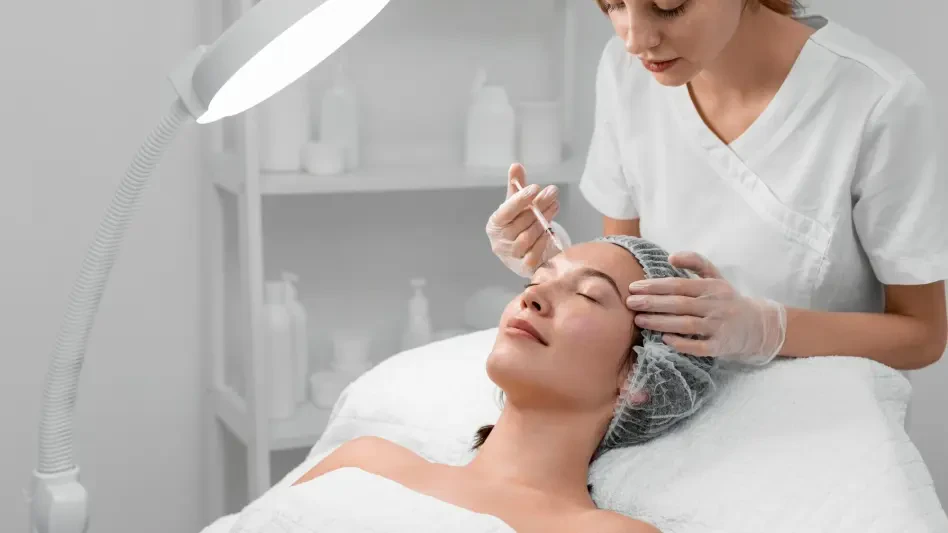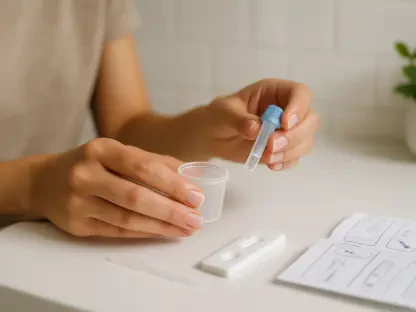Overview of the UK Cosmetics Industry and Regulatory Context
The UK cosmetics industry, particularly the aesthetics sector, stands at a critical juncture as non-surgical procedures like Botox and dermal fillers surge in popularity, transforming beauty standards across the nation and raising urgent questions about safety and oversight. This booming market, valued in the billions, encompasses a wide range of treatments, from minimally invasive injections to high-risk procedures such as Brazilian butt lifts. Major players, including private clinics and independent practitioners, dominate the landscape, while technological advancements continue to drive innovation in treatment methods and product formulations.
Beyond the market dynamics, nurses and other healthcare practitioners play a pivotal role in delivering these services, often bridging the gap between medical expertise and aesthetic care. However, the industry has long grappled with a troubling lack of oversight, often likened to a “wild west” environment. Historically, this regulatory void has allowed unqualified individuals to perform complex procedures, resulting in significant safety risks and prompting urgent calls for reform to protect vulnerable consumers.
Current Trends and Industry Dynamics
Emerging Risks and Consumer Safety Concerns
A disturbing trend within the UK cosmetics sector is the rise of unqualified “cowboy” operators who conduct procedures in non-clinical settings such as homes or temporary pop-up venues. These environments lack proper sterilization and emergency protocols, heightening the risk of severe complications. Reports of scarring, infections, and even fatalities have become alarmingly common, particularly with high-risk treatments that demand surgical precision and medical oversight.
Consumer behavior is also shifting, with a growing demand for affordable cosmetic enhancements often leading individuals to prioritize cost over safety. This trend exacerbates the problem, as many opt for cheaper services offered by untrained providers, unaware of the potential consequences. Such choices frequently result in irreversible damage, placing additional strain on public health resources as patients seek corrective care.
The burden on the National Health Service (NHS) has intensified as a direct consequence of these botched procedures. Emergency rooms and specialist units are increasingly tasked with managing complications that could have been prevented with proper regulation. This situation underscores a pressing public health crisis, highlighting the urgent need for systemic change to safeguard patient well-being.
Market Data and Growth Projections
Statistical insights reveal the rapid expansion of the UK cosmetics industry, with non-surgical procedures experiencing double-digit growth annually. Industry estimates suggest that the market for aesthetic treatments could continue to expand significantly over the next few years, driven by rising consumer interest and accessibility. However, this growth is overshadowed by concerning data on adverse outcomes, including 41 confirmed cases of iatrogenic botulism linked to unlicensed Botox-like products reported in a recent three-month period.
Looking ahead, forecasts indicate that regulatory changes could reshape market dynamics by curbing the activities of rogue operators while fostering greater consumer confidence. Stricter oversight may initially slow growth for non-compliant providers but is likely to stabilize the industry in the long term. Enhanced safety standards could also attract more discerning clients, boosting demand for services offered by qualified professionals.
The interplay between regulation and market evolution remains a key area to watch. As new policies take effect, their impact on pricing, accessibility, and innovation will likely influence how the sector adapts. A forward-looking perspective suggests that a balance between safety and growth is achievable, provided that enforcement mechanisms keep pace with industry developments.
Challenges in Ensuring Patient Safety
One of the most formidable obstacles in the UK cosmetics industry is the pervasive presence of unqualified practitioners who operate without formal training or credentials. These individuals often bypass basic safety protocols, putting clients at severe risk of harm. Addressing this issue requires not only legislative action but also a cultural shift toward valuing expertise over convenience or cost.
Enforcement poses another significant challenge, as monitoring small-scale or rogue operators proves difficult in a fragmented market. Many of these practitioners evade detection by working in informal settings or advertising through unregulated channels, complicating efforts to hold them accountable. This gap in oversight allows dangerous practices to persist, undermining public trust in the sector.
Potential solutions include bolstering public awareness campaigns to educate consumers on the risks of choosing unqualified providers. Additionally, implementing stricter penalties for non-compliance and expanding training programs for practitioners could elevate industry standards. Collaboration between government bodies, industry stakeholders, and educational institutions will be essential to create a safer environment for cosmetic treatments across varying risk levels.
Details of New UK Cosmetic Regulations
In response to mounting safety concerns, the UK government has introduced a comprehensive “Plan for Change” initiative, featuring a tiered regulatory framework designed to address the diverse nature of cosmetic procedures. At its core, this plan categorizes treatments based on risk, ensuring that high-risk interventions are performed exclusively by qualified healthcare professionals under the oversight of the Care Quality Commission (CQC). This measure aims to prevent life-threatening outcomes associated with complex procedures.
Lower-risk treatments, such as Botox and facial fillers, fall under a separate local authority licensing system, which mandates rigorous safety, training, and insurance standards for practitioners. Specific protections are also in place, including restrictions on high-risk procedures for individuals under 18 unless medically authorized, reflecting a commitment to safeguarding vulnerable groups. These regulations seek to establish a baseline of accountability across the industry.
Compliance is a critical component of the new framework, with penalties outlined for those who fail to adhere to the established guidelines. To refine the scope of these regulations, public consultations are planned to gather input from stakeholders and ensure that the policies address real-world challenges. This inclusive approach signals an intent to balance strict control with practical implementation, fostering a safer and more professional cosmetics sector.
Future Outlook for the Cosmetics Industry Under New Regulations
The introduction of these regulations is expected to profoundly influence industry practices by elevating professional standards and prioritizing consumer safety. Qualified practitioners may benefit from a competitive edge as clients increasingly seek reputable providers, while unqualified operators could face significant barriers to entry. This shift could gradually restore public trust, reshaping the perception of cosmetic treatments as safe and reliable.
However, potential disruptors loom on the horizon, including ongoing investigations by the UK Health Security Agency (UKHSA) into adverse reactions linked to unlicensed products. Such inquiries highlight the persistent threat of substandard materials in the market, which could undermine regulatory efforts if not addressed concurrently. Vigilance in monitoring product safety will be crucial to complement the new procedural guidelines.
Stakeholder collaboration and public input during upcoming consultations will play a vital role in fine-tuning these policies to ensure their effectiveness. Long-term factors, such as innovations in cosmetic techniques and alignment with global regulatory trends, will also shape the industry’s trajectory. Economic influences, including affordability and market demand, are likely to intersect with these developments, creating a complex but promising future for the sector.
Conclusion and Recommendations for Patient Protection
Reflecting on the comprehensive analysis, it becomes evident that the urgency to regulate the UK cosmetics industry has reached a critical point, driven by widespread unsafe practices that endanger public health. The government’s response through the “Plan for Change” initiative marks a significant step forward, with its tiered approach and stakeholder support laying a solid foundation for reform. Yet, gaps in enforcement and monitoring reveal persistent challenges that need addressing to ensure the regulations achieve their intended impact.
Moving forward, actionable steps emerge as essential to strengthen patient protection. Implementing robust monitoring mechanisms to track compliance among all practitioners, especially small-scale operators, stands out as a priority. Increased funding for enforcement agencies must be considered to provide the resources needed for effective oversight. Additionally, public education campaigns are deemed crucial to empower consumers with knowledge about safe choices, encouraging them to prioritize qualified providers over cheaper, riskier alternatives.
Ultimately, the path to rebuilding trust in the cosmetics industry hinges on sustained regulatory efforts and a commitment to professionalization. By fostering collaboration between government, industry leaders, and the public, a safer environment for cosmetic procedures can be cultivated. This focus on continuous improvement and adaptability offers hope for an industry poised to balance innovation with the paramount goal of consumer safety.









